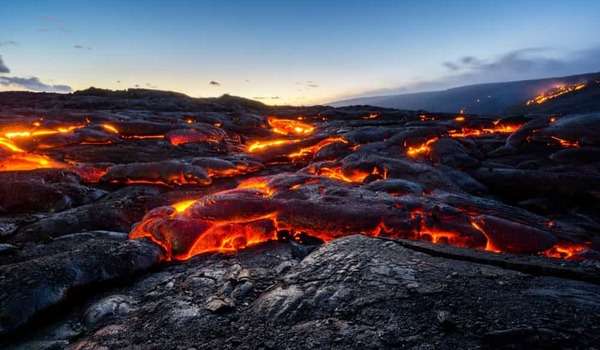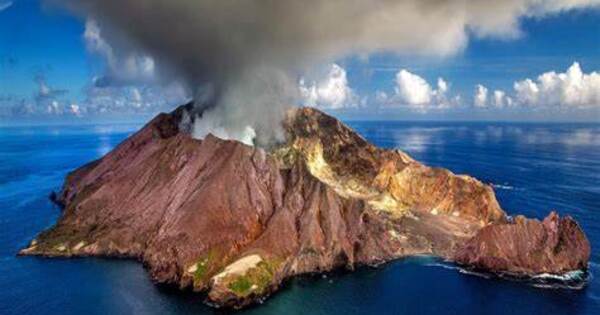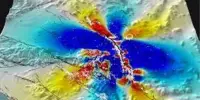Massive volcanic eruptions in Earth’s history that emitted large amounts of carbon into the atmosphere are usually associated with periods of severe environmental change and catastrophic extinction. An international team lead by academics from Penn State and the University of Oxford believes that a novel method for estimating how much and how quickly carbon was released by volcanoes could improve our understanding of the climate response.
The researchers revealed in the journal Nature Geosciences that they had devised a new technique for estimating excess mercury left behind in the geological record as a result of ancient volcanic activity. The technique can estimate carbon emissions from large igneous provinces (LIPs), which are volcanic occurrences that can last millions of years and create magma that reaches the Earth’s surface, forming hundreds of miles-long lava flows.
“Large igneous provinces are often used as an analog for human-caused climate change because they occur relatively rapidly geologically and release a lot of carbon dioxide,” said Isabel Fendley, assistant research professor of geosciences at Penn State and the study’s primary author. “But one big challenge we address with this study is that to date, it has been really difficult to figure out exactly how much carbon was released by these volcanoes.”
Large igneous provinces are often used as an analog for human-caused climate change because they occur relatively rapidly geologically and release a lot of carbon dioxide. But one big challenge we address with this study is that to date, it has been really difficult to figure out exactly how much carbon was released by these volcanoes.
Isabel Fendley
The researchers examined core samples from the early Jurassic period that span 20 million years and discovered that mercury levels rose during the peak activity of the Karoo-Ferrar large igneous province and the associated Toarcian Oceanic Anoxic Event, which occurred approximately 185 million years ago and was characterized by extensive environmental and climate change.
However, the overall projected carbon emissions based on the mercury data were much lower than what carbon-cycle models anticipated to be required to create the observed environmental effects.
The findings suggest the volcanism triggered positive Earth system feedbacks – climate and environmental responses to the initial warming that in turn produced more warming. These positive feedbacks may be as important as the primary emissions in these large carbon emission scenarios, and current carbon cycle models may be underestimating the effects of a given amount of emissions, the scientists said.

‘What this shows us is that there are Earth system responses that exacerbate the effects of the carbon the volcanoes emitted,” Fendley said. “And based on our results, these feedback processes are actually quite important but not well understood.”
Accurate estimates of LIP carbon emissions are important for understanding the impacts of positive and negative carbon-cycle feedback processes on future climate projections, the scientists said.
“In addition to historical climate change and understanding the history of life, it’s also relevant for how we understand Earth’s climate and how we investigate what happens to the environment after you release large amounts of carbon dioxide into the atmosphere,” Fendley said in a statement.
Estimating the amount of carbon emissions linked with LIPs has been difficult in part because scientists have an insufficient record of how much lava erupted. The Karoo-Ferrar LIP, for example, happened on the old supercontinent Gondwana, and the resulting debris is now scattered across the southern hemisphere, including modern-day Southern Africa, Antarctica, and Tasmania, according to the experts.
The researchers instead turned to mercury, which is released as a gas during volcanic eruptions but was otherwise rarely found in high concentrations in the environment prior to human activity. Looking at the chemistry of rocks in the core samples, the scientists were able to determine how much mercury would be expected based on environmental conditions and how much extra was present caused by the volcanoes.
They developed a method to convert the measured changes in mercury concentrations to the volume of mercury gas emissions. Using the ratio of mercury gas emissions to carbon emissions in modern volcanoes, they estimated how much carbon the ancient volcanoes released.
The researchers stated that the core samples from the Mochras borehole in Wales, U.K., presented a unique chance to undertake this investigation. The extensive record provided the first unambiguous evidence that volcanic eruptions were substantially larger during this time period than in the previous 15 million years, according to the experts.
“The large amount of existing geochemical data from the Mochras Farm (Llanbedr) borehole in Wales, drilled by the British Geological Survey, plus the very well-constrained chronology, provided a unique opportunity that enabled this analysis,” Fendley said in a press release. “The decades-worth of previous work on the Mochras core enabled us to reconstruct original gas fluxes over millions of years, for periods that are traditional targets for paleo-environmental studies as well as the background state.”
















